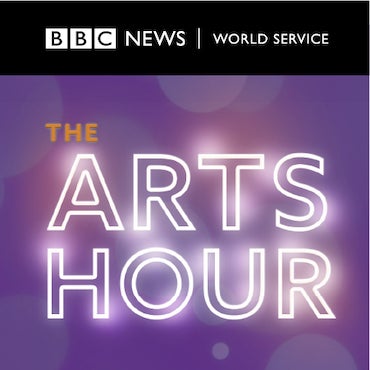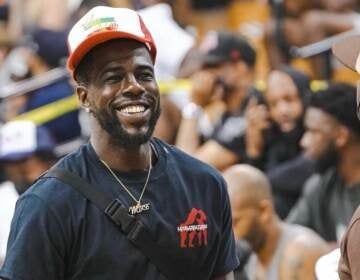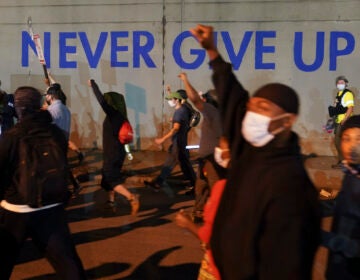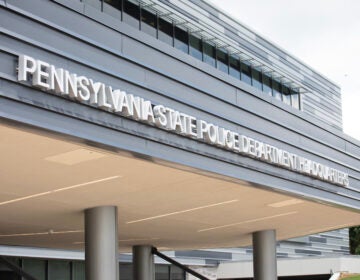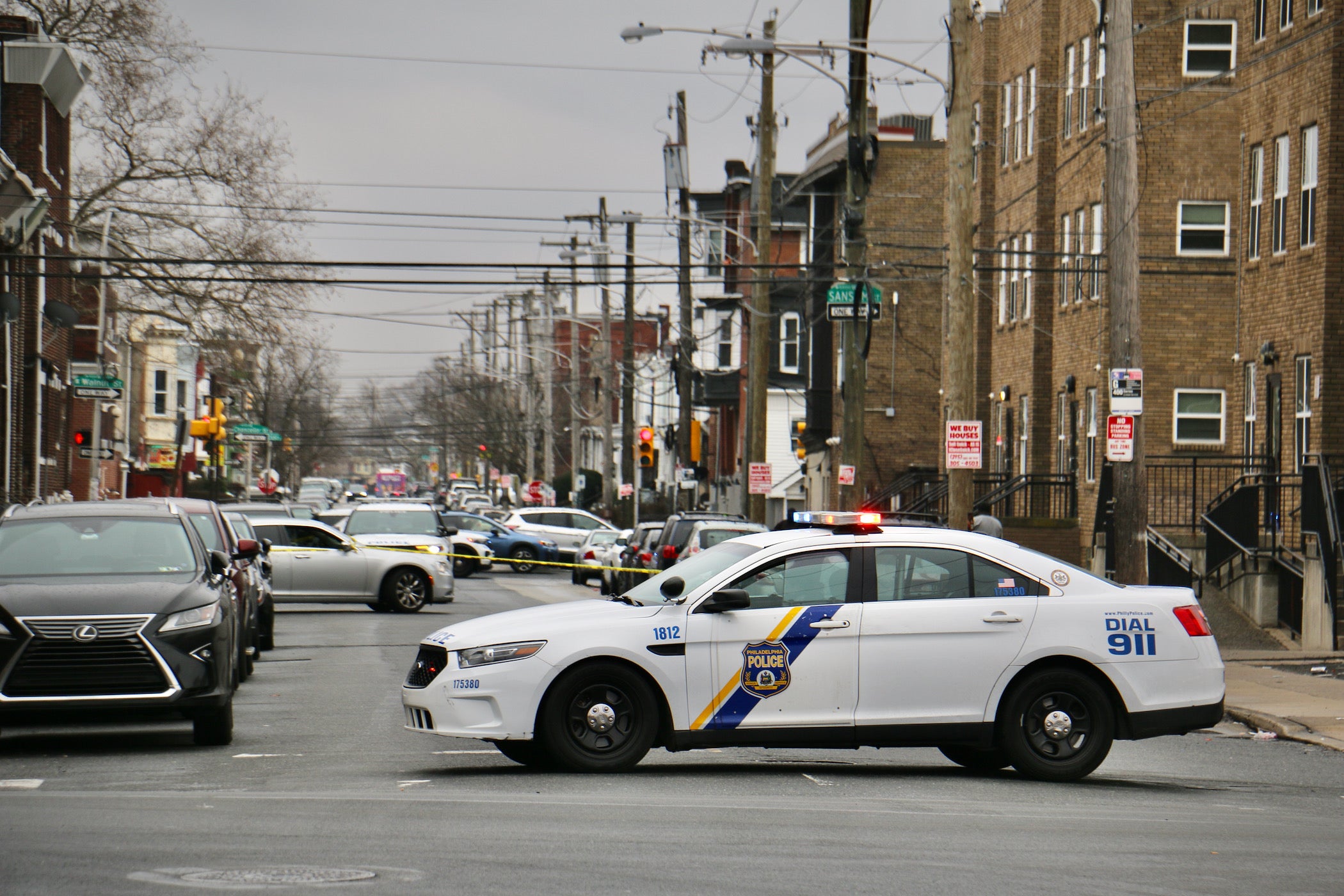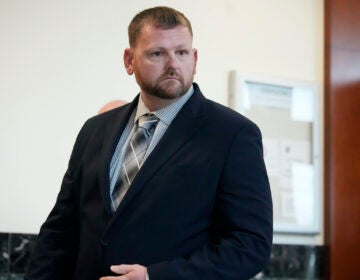Protesters win $9 million settlement and police demilitarization pledge for 2020 tear-gassing
The settlement with the group of 20 activists, organizers, and West Philly residents also includes a pledge to demilitarize the police.
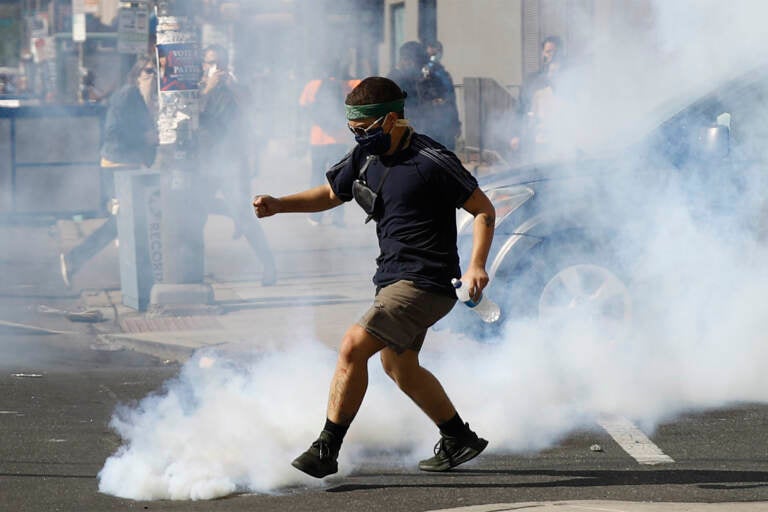
A protester kicks a tear gas canister fired by police as protests continue Sunday, May 31, 2020, in Philadelphia over the death of George Floyd. Floyd died May 25 after he was pinned at the neck by a Minneapolis police officer. (AP Photo/Matt Rourke)
This story originally appeared on Billy Penn.
A group of protesters and residents who sued Philadelphia over what they deemed excessive force, reckless behavior, and discriminatory policing in 2020 have announced a $9 million settlement with the city.
The Kenney administration’s heavy-handed response to the racial justice protests and turmoil that erupted in Philadelphia following the murder of George Floyd and others elicited wide criticism, and quite a few civil rights lawsuits.
Four of these suits have led to a monumental payout — and a major policy change that will “demilitarize” the Philly PD.
Plaintiffs in one West Philly-centered complaint include activists, observers, West Philly residents, and others. They joined attorneys and community organizers Monday morning outside the Paul Robeson House to describe the settlement agreement. It includes:
- $9,000,000 in damages to those impacted
- A $500,000 award for a grantmaking fund to be run by Bread & Roses Community Fund, an independent fiscal sponsor for Philly grassroots movements that’s been around since the early 1970s.
- Policy changes that include the Philadelphia Police Department disengaging from a federal program known as LESO/1033, which allows local law enforcement to receive military equipment from the Department of Defense. More than 8,000 state and municipal agencies currently participate in the program.
- Twice-a-year meetings between the PPD commissioner and community members from West Philly, so they can give feedback and voice concerns.
The city has previously issued a series of reports and communications on the chain of command and decision making process during those days of protest and unrest.
What was in the complaint?
The plaintiffs of one of the four civil rights lawsuits involved in the settlement focused their complaint on the events that took place on and around 52nd and Market Street on May 31. On that day, in that neighborhood, police used rubber bullets and tear gas in residential areas.
The tear gassing of protestors on I-676 drew an apology from Mayor Jim Kenney, but that wasn’t the case for West Philly, which he called a “totally different situation” per the complaint. Kenney did apologize to West Philadelphians specifically in late 2020.
Included in the complaint were the following claims and points:
- Kenney authorized the use of non-lethal munition, but didn’t ensure that the police wouldn’t use those capabilities in “an aggressive and unlawful manner.”
- Described police attacks on residents, protestors, bystanders, and legal observers “without provocation,” undertaken with the use of tear gas, pepper spray, and rubber bullets. The focus of these alleged attacks was also an issue of concern.
- Contrary to PPD claims that police action was solely focused on preventing looting, that “military style armored vehicles” were used for “indiscriminate” attacks in nearby residential areas. The use of pepper spray was singled out as being utilized outside of the bounds set by PPD directives.
- That various officers said the n-word and other racial slurs throughout these events were also put forward by petitioners. The plaintiffs in the case said none of their actions on that day warranted the response from police.
- That other sites of protest in the city didn’t deal with similar police responses, including looting in Center CIty on May 30, and reports of the same in Port Richmond, Kensington, and Fishtown on May 31 and June 1.
In all, the plaintiffs alleged a violation of their 1st, 4th, and 14th Amendment rights, regarding retaliation to constitutionally protected speech, excessive force, and discriminatory policing respectively.
Attorneys also described the arrest of plaintiff Anthony Smith as unlawful and included the violation of the 1964 Civil Rights Act and charges of battery and assault as additional causes of legal action.

How did the city explain what happened?
The Controller’s Office issued a report in early 2021, focused on the limited planning that took place before May 30 and in the days that followed, and the use of tear gas on I-676, in West Philly, and in Kensington.
In interviews for the report, Commissioner Outlaw stated that she and Kenney had discussed the use of tear gas before May 31, which the mayor wanted to avoid in all except the most extreme circumstance. Still, Kenney gave Outlaw the okay to authorize the use of tear gas, which hadn’t been used in the city since the MOVE bombing in 1985 — things went awry from there.
Concerning May 31, the report detailed the looting of the Foot Locker near 52nd Street and Chestnut, where bricks were thrown at police officers by the crowd assembled there at the time. An inspector whose nose was broken by a brick requested tear gas be used, which Outlaw authorized.
The report states that Outlaw thought she was authorizing use of tear gas at the site of the Foot Locker, but the SWAT team on the scene went further than that. The SWAT team’s own account of events details the use of tear gas at 52 and Arch, near Malcolm X Park, between Market and Spruce — including side streets where no activity was taking place — and 52nd and Walnut.
SWAT’s account and videos used in the city’s investigation align with the accounts of the plaintiffs at multiple points, without including any mention of the use of racial slurs.
One sentence from the Controller’s Office report lays it out: “Witnesses interviewed noted that the CS gas and rubber bullets were deployed not only along Market Street, but also down side streets where no protest or any improper activity occurred; those side streets intersected with Market Street and flowed through the residential section of the neighborhood.”
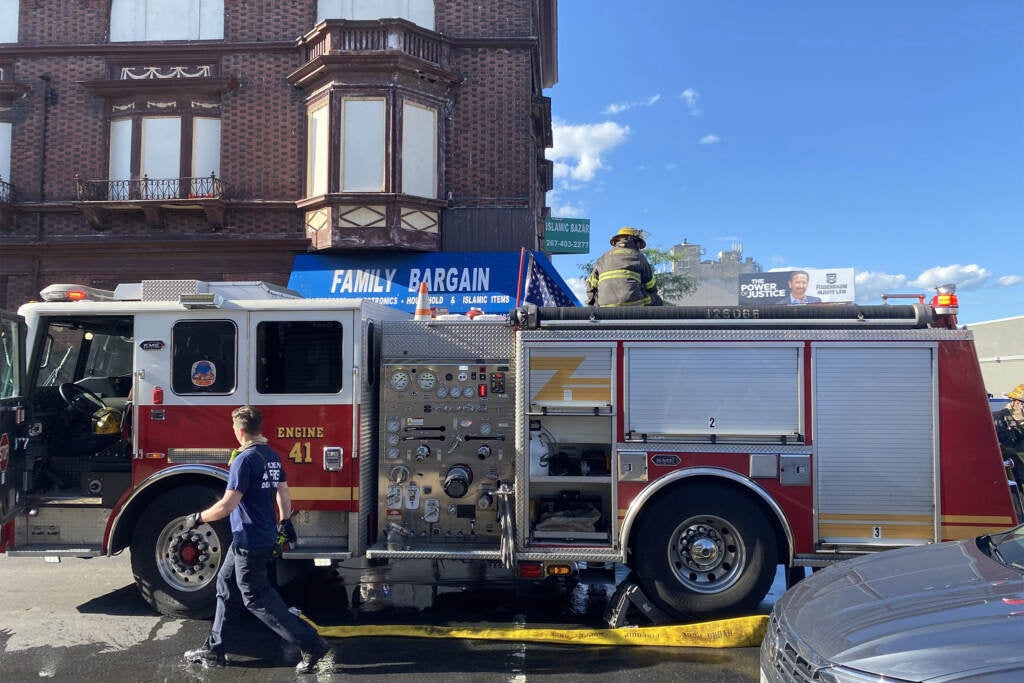
How did the West Philly suit end up in settlement 3 years later?
Over the course of the 2.5 years the West Philly case was active, the city filed multiple requests to delay their response to the complaint.
The case was referred to Magistrate Judge David R. Strawbridge for a settlement conference on March 10, 2021, after a joint letter from the plaintiffs was filed a week earlier.
After the case moved to settlement negotiations, the NAACP Legal Defense Fund, already representing plaintiffs in the case, got involved — as they have with similar cases from around the country — by sending the city a letter suggesting the implementation of a model consent decree and suite of police policy reforms.
The city didn’t respond to the LDF’s suggestions, but denied a suite of reforms suggested by plaintiffs later on.
Court records show that plaintiffs met with Phillly’s Chief Diversity, Equity, and Inclusion Officer at the time, Nefertiri Sickout, in the latter half of 2021. Per court filings, they met to discuss:
- A potential proposal for PPD to monitor extremism and white supremacy among officers
- The enforcement of PPD directives 8.11 and 10.2, which address racial bias and use of force respectively
- The damages matrix being forwarded by the plaintiffs
Negotiations continued for about a year, with the final settlement conferences taking place last December.
Who are the plaintiffs in the West Philly case?
The West Philly case involved 20 plaintiffs who were represented by Abolitionist Law Center, the Legal Defense Fund, and Kairys, Rudovsky, Messing, Feinberg & Lin. The mix of activists, observers, residents, and protesters involved in the suit, based on their accounts in the complaint include:
- Bedjy Jeanty — A protestor whose shoulder was dislocated by a rubber bullet.
- Anthony Smith — A former public school teacher and activist who the suit claims was wrongfully arrested and detained by PPD for roughly eight hours. Smith is facing federal charges stemming from the 2020 protests, which led to other Philly activists starting up a defense campaign.
- Joseph Moyer — A West Philly resident shot in the back by a less-than-lethal projectile.
- Ketty Richard — A protester who heard PPD members use racial slurs as she was tear gassed.
- Marie Johnson — A resident who lives near 52nd and Chancellor, who watched police armored vehicles from her porch, saw PPD shoot rubber bullets at neighbors from her block, and was tear gassed.
- Ryan Bing — A protester who was tear gassed and hit by a less-than-lethal round.
- Shahidah Mubarak-Hadi — A West Philly resident who was at home when she saw tear gas coming through her open windows, which affected her and her sons, three and six years old at the time.
- Amelia Carter — A resident who was observing what was taking place, and was tear gassed multiple times.
- Christina Garcés — A Temple medical student who went to 52nd Street to provide aid to anyone who needed it. She dealt with “burns, cuts, and active bleeding,” recommended that some affected go to the emergency room, and witnessed the targeting of street medics. She saw the looting of a liquor store near 49th and Baltimore, where police were not present.
- Marquis Ransom — A protester who was tear gassed.
- Cora Isom — An area resident who was tear gassed and took shelter in the house of another plaintiff, Catherine Heite.
- Catherine Heite — An area resident with some medical training, who was present with a helmet and buckets of water to diffuse tear gas canisters. She was shot with rubber bullets twice, and saw three young girls hiding under a cardboard box to avoid police munitions.
- Emily Neil — A freelance journalist at the time (who now works at WHYY), who was taking pictures of the scene. As she documented the scene a nearby protester told passing SWAT officers he was recording. They opened fire on Neil and the man with rubber bullets. Neil was struck twice, once in the head which led to eight stitches on her forehead.
- Judith Palmer — An area resident who was present as a bystander. She was shot by a rubber bullet, though no one around her was engaged in disruptive activity, per the complaint.
- Sahar Sadeghi — An area resident on the scene as a bystander, who was pepper sprayed without provoking such a response from police officers.
- Anthony James — A Philadelphian riding his bike by the scene, who stopped to view what was going on and was pepper sprayed.
- Sergio Cea — An activist who was on the scene observing police actions, and was pepper sprayed. Cea is political director of Reclaim Philadelphia, a progressive political organization.
- Johana Rahman — An area resident and trained street medic who was directing people to a makeshift medic station. Rahman, an asthmatic, began to hyperventilate when she was tear gassed.
- Isa Richardson — An organizer with Philly for REAL Justice, who was working as a street medic. Richardson was tear gassed.
Correction: A previous version of this article did not indicate the agreement was to settle four lawsuits.
WHYY is your source for fact-based, in-depth journalism and information. As a nonprofit organization, we rely on financial support from readers like you. Please give today.

